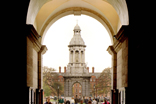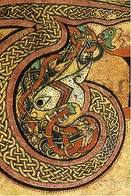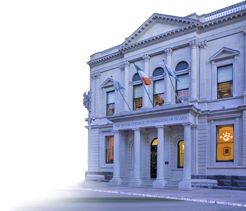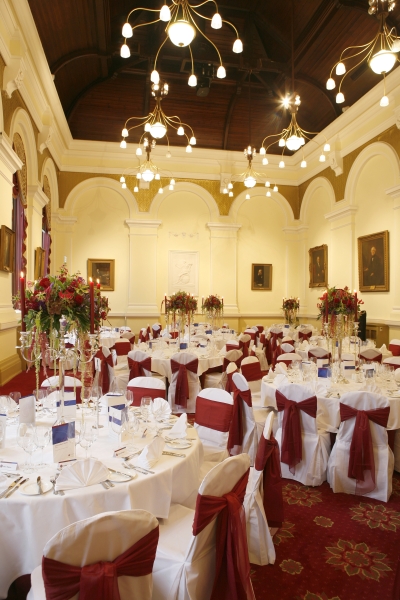 Conference Venue: Trinity College Dublin
Conference Venue: Trinity College Dublin
Trinity College, Dublin (TCD) was founded in 1592 by Queen Elizabeth I and is the only constituent college of the University of Dublin. It is Ireland's oldest university, boasting fine squares and gardens together with a collection of magnificent buildings dating from the 17th to the 21st century. Located on its own 40 acre site, it retains some of its ancient seclusion of cobbled squares, gardens and parks. Trinity College has produced many famous graduates over the centuries, including Edmund Burke and Oliver Goldsmith (whose statues stand outside), Jonathan Swift, Oscar Wilde, Bram Stoker, two presidents of Ireland.
Academically, Trinity is divided into three faculties comprising 24 schools, offering degree and diploma courses at both undergraduate and postgraduate levels. Trinity College Dublin is recognised internationally as Ireland's premier university and is ranked in 52nd position in the top 100 world universities and 14th position in the top 200 European universities by the QS World University Rankings 2010.
The Library of Tri

nity College is a legal deposit library for Ireland and the United Kingdom, containing over 4.5 million printed volumes and significant quantities of manuscripts, maps and music.
The Old Library and the Book of Kells Exhibition is a “must see” on the itinerary of all visitors to Dublin. Located in the magnificent 18th century Old Library building is the Book of Kells - a 9th-century gospel manuscript famous throughout the world for its lavish decoration. The Book of Kells was written around the year 800 AD and is one of the most beautifully illuminated manuscripts in the world. Its 680 pages of vellum contain the Latin texts of the Four Gospels. It was written around 800AD by Irish monks, probably begun at a monastery in Iona, an island off Scotland and finished at Kells, Co. Meath. It was later buried in the ground for fear of the Vikings and after being eventually rediscovered it was deposited for safe keeping in Trinity around 1653. It has been on display in the Old Library at Trinity College Dublin from the mid 19th century, and attracts over 500,000 visitors a year. Since 1953 it has been bound in four volumes. Two volumes are on public view, one opened to display a major decorated page, and one to show two pages of script. The volumes are changed at regular intervals.
Welcome Reception Venue: No. 6 Kildare Street

This wonderful listed building was erected on the former site of the Kildare Street Club, purchased by the Royal College of Physicians of Ireland in 1860 for £5,000. Four months after the College purchased the building, it was completely destroyed by fire before they could moved in. As a result the College were able to commission a completely new building to their own specifications, and used the insurance money to finance the build. The new building only reached back to the Graves Hall. Behind this was a separate Racquet Court (now the Corrigan Hall) which had been part of the Kildare Street Club, as a separate structure it had escaped the fire of 1860. For nearly ten years after the College moved into the building the Racquet Court was let back to the Club. In the 1870s the College refurbished the Court, keeping the original wooden ceiling, and building a link corridor to the rest of the building.

The Graves Hall, still contains its original, and very fine, plasterwork. The room is also decorated with the monogram of Queen Victoria, the reigning monarch at the time of construction. The stained glass above door and two windows show the Royal coat of arms, and the arms of John Stearne the College’s first President (left) and Sir Patrick Dun, another early President.
In the Corrigan Hall the window shows the coat of arms of Sir Dominic Corrigan who oversaw the purchase and construction of this building conjoined with that of his wife at top. The ceiling is the original one from the racquets court, and was especially high to facilitate playing the game. It is constructed without use of nails. Portraits of Past-Presidents and Fellows, including Sir Dominic Corrigan, in the centre of the wall over the stage.